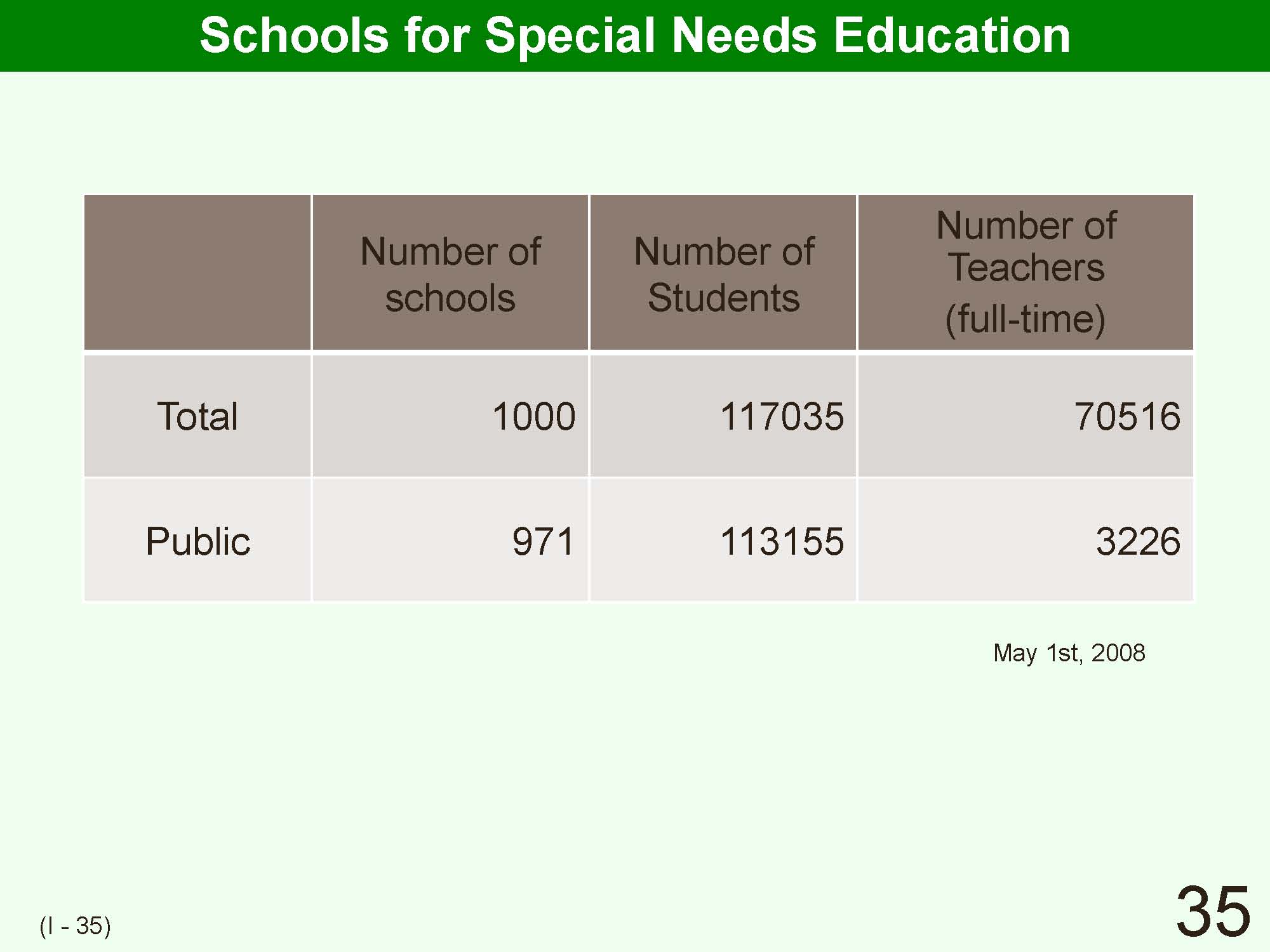| 35 | gI Outline of Japanese School Systemh | Previous | Next | JAPANESE |
|---|---|---|---|---|
 |
||||
| The number of schools for the blind and for the deaf in Japan has hardly changed over time. However, the number of schools for the handicapped other than the blind and for the deaf has been increasing since their formal establishment became compulsory in 1979. The number of students in schools for the blind and for the deaf has decreased to about 1 / 3 of 1950 levels. The reasons are not only that the total number of students in Japan has decreased, but also that the number of blind or deaf children have declined due to advances and improvements in medical science. The number of students entering schools for the handicapped other than the blind and the deaf has increased since 1979 because of the increase in the number of children with multiple and severe disabilities attending school. This is because of: a decrease in the number of children not attending school as education became compulsory, an increase in the number of children with multiple and severe disabilities and the establishment of a new category for disability.
The number of teachers has increased in absolute terms as well as the ratio of students to teachers for all three types of schools for handicapped children. Currently, the average number of students per teacher is 1.14 for schools for the blind, 1.37 for schools for the deaf and 1.62 for school sfor the handicapped other than the blind and the deaf. |
||||
Please send your comments and concerns here
kamada@criced.tsukuba.ac.jp
Center for Research on International Cooperation in Educational Development(CRICED) University of Tsukuba
1-1-1, Tennodai, Tsukuba-shi, IBARAKI
305-857, JAPAN